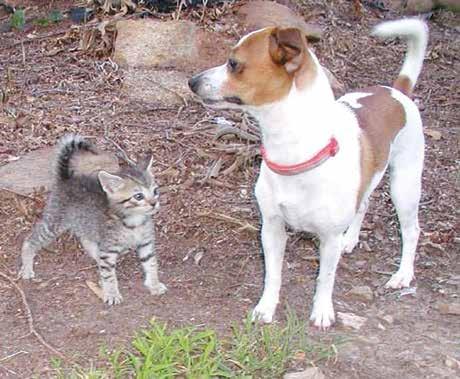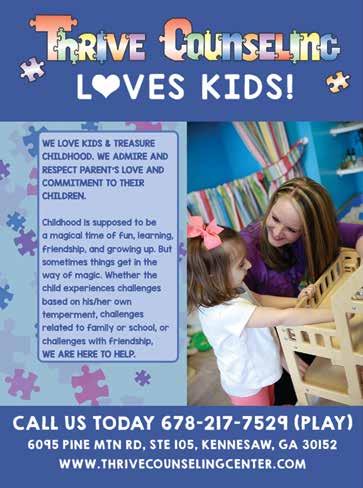
3 minute read
Tiffany Hughes
Above, Tiffany and her husband decided to adopt Harley, after seeing this photo of her playing with a dog at her foster home.
Right, Baby Kitty and Jasper alert Tiffany when her blood sugar dips too low.
Advertisement


Saving Animals with Foster Families
BY TIFFANY HUGHES
Have you ever wondered why there are so many posts from shelters and rescue groups on social media, begging for foster homes? The short answer is space. Rescues usually pull from high-kill shelters. For every animal placed in a foster home and/or adopted from a rescue, a space opens for another animal to be saved.
Fostering isn’t a commitment to adopt, it’s a commitment to help right now. Fostering means letting the animal live in your home, and treating it like one of your pets. Placing rescued animals in a foster home ensures the animal will be cared for until it is adopted. Seeing how a pet behaves in a home, rather than a shelter, is invaluable information for future adoptive families.
When fostering, it’s important to take good, clear photos of the pet, and notes about the animal’s behavior, which are used on the facility’s website listing the animal for adoption. Ten years ago, my husband and I were looking for a kitten that would be good with our two dogs. We found the rescue group Forgotten Paws, which had a kitten named Harley living in a foster home with dogs.
Foster homes can help animals with medical conditions, such as a diabetic cat or a dog that needs a special diet. Some families foster senior dogs, who can have medical issues as well, allowing them to spend the last stages of their lives with a loving family.
Fostering also saves human lives. My foster baby literally came to my rescue. We had just taken in a 6-month-old puggle (pug/Jack Russell terrier mix) to foster. We already had his brother. Within a week of his arrival, we noticed that Jasper not only detected my low blood sugars at night (I’m a Type 1 diabetic), but he would jump on me to wake me up, then jump off the bed and herd me into the closet where I kept my supplies. He would pay special attention to me when my husband traveled overnight. We wasted no time in adopting him and his brother. Eight years later, Jasper has saved me more times than I can count, when my blood sugar dropped so dangerously low that I could barely function. In the depths of my haze, I instinctively followed Jasper’s lead and get food or drink to raise my blood sugar.
Having a furbaby who can do this with no training is a blessing. But it’s nothing short of a
Saving Animals with Foster Families
miracle that I have two. The same year we adopted Jasper, we also fostered a beautiful Norwegian Forest kitten. Baby Kitty was tiny, long-haired and super affectionate. As a kitten, he always slept at the top of my head. We quickly realized that when he sensed my low blood sugars, he would sit on my chest and bite my earlobes, or smack me with his paws until I woke up. We also adopted him. As he grew older and bigger, the biting of my earlobes stopped, and, now, he sits on my nightstand and head butts me to wake me. These two have been my furry guardian angels the last eight years.
If you’re interested in fostering, check with rescues in your area, such as Forgotten Paws, Mostly Mutts, Angels Among Us, Southern Animal Rescue or Purr Nation Cat Alliance, just to name a few. But if the furry four-legged pets aren’t your thing, Georgia Reptile Society always needs foster homes for the snakes, lizards, etc. When choosing a rescue to foster for, make sure the organization is a 501(c)3 nonprofit. Usually, the rescue will provide preventative care for fleas/ ticks/heartworm, any medicines needed, vet visits and food and a bed, if needed. You provide love, snuggles and toys.
While fostering doesn’t guarantee you’ll find an untrained medical alert animal, you will be saving the life of two furbabies: the one you are fostering and the one who takes its place at the rescue. While rescuing one animal might not change the world, it will change the world for that animal.
For more information about fostering, email Tiffany Hughes at creativecook11@yahoo.com.












